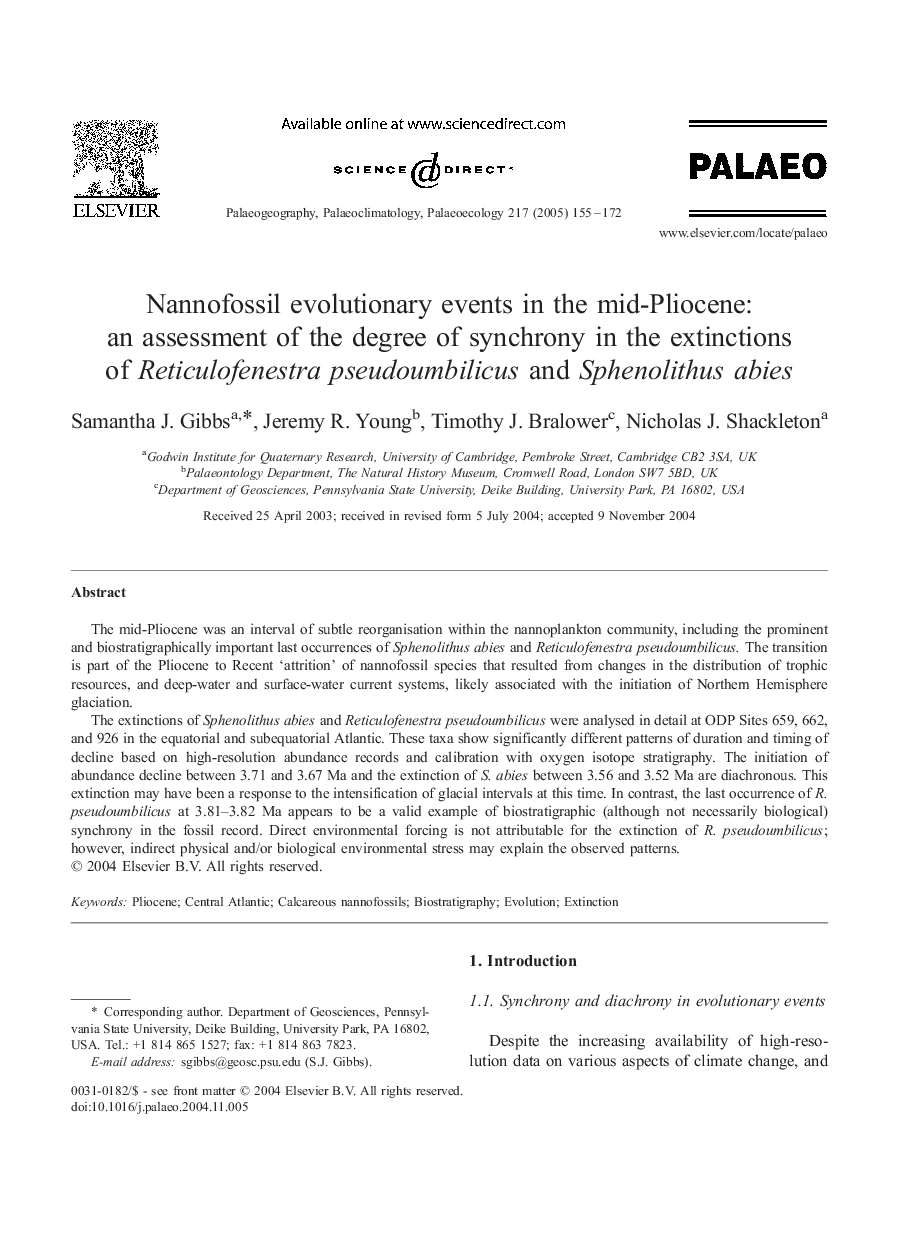| Article ID | Journal | Published Year | Pages | File Type |
|---|---|---|---|---|
| 9463086 | Palaeogeography, Palaeoclimatology, Palaeoecology | 2005 | 18 Pages |
Abstract
The extinctions of Sphenolithus abies and Reticulofenestra pseudoumbilicus were analysed in detail at ODP Sites 659, 662, and 926 in the equatorial and subequatorial Atlantic. These taxa show significantly different patterns of duration and timing of decline based on high-resolution abundance records and calibration with oxygen isotope stratigraphy. The initiation of abundance decline between 3.71 and 3.67 Ma and the extinction of S. abies between 3.56 and 3.52 Ma are diachronous. This extinction may have been a response to the intensification of glacial intervals at this time. In contrast, the last occurrence of R. pseudoumbilicus at 3.81-3.82 Ma appears to be a valid example of biostratigraphic (although not necessarily biological) synchrony in the fossil record. Direct environmental forcing is not attributable for the extinction of R. pseudoumbilicus; however, indirect physical and/or biological environmental stress may explain the observed patterns.
Related Topics
Physical Sciences and Engineering
Earth and Planetary Sciences
Earth-Surface Processes
Authors
Samantha J. Gibbs, Jeremy R. Young, Timothy J. Bralower, Nicholas J. Shackleton,
